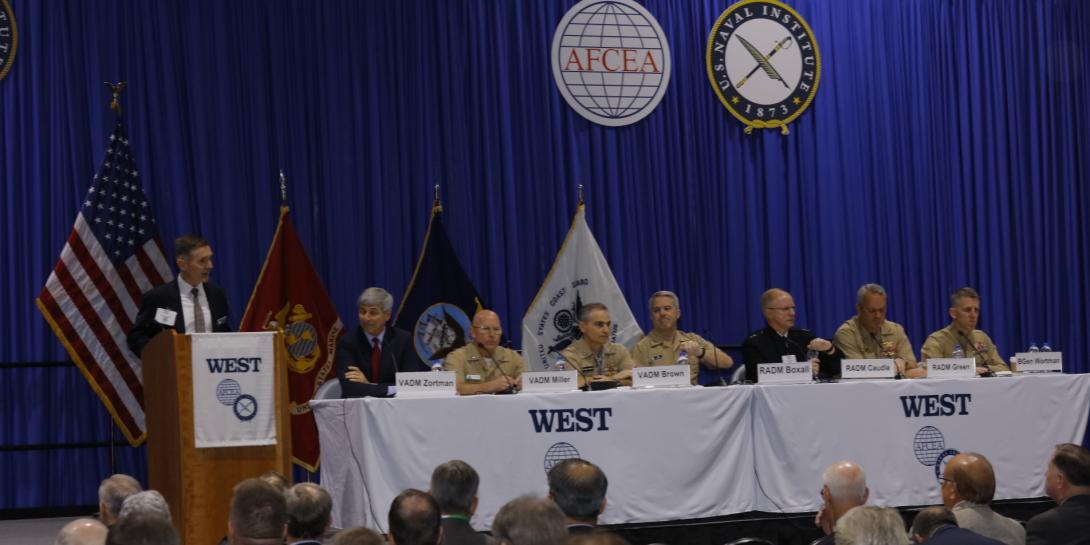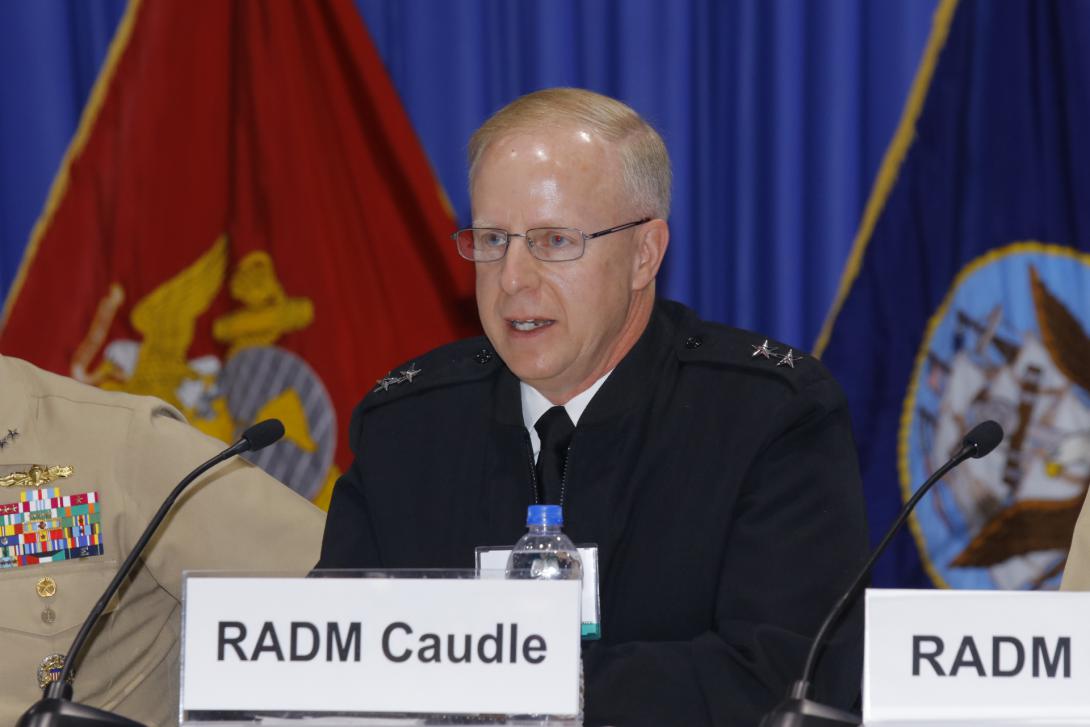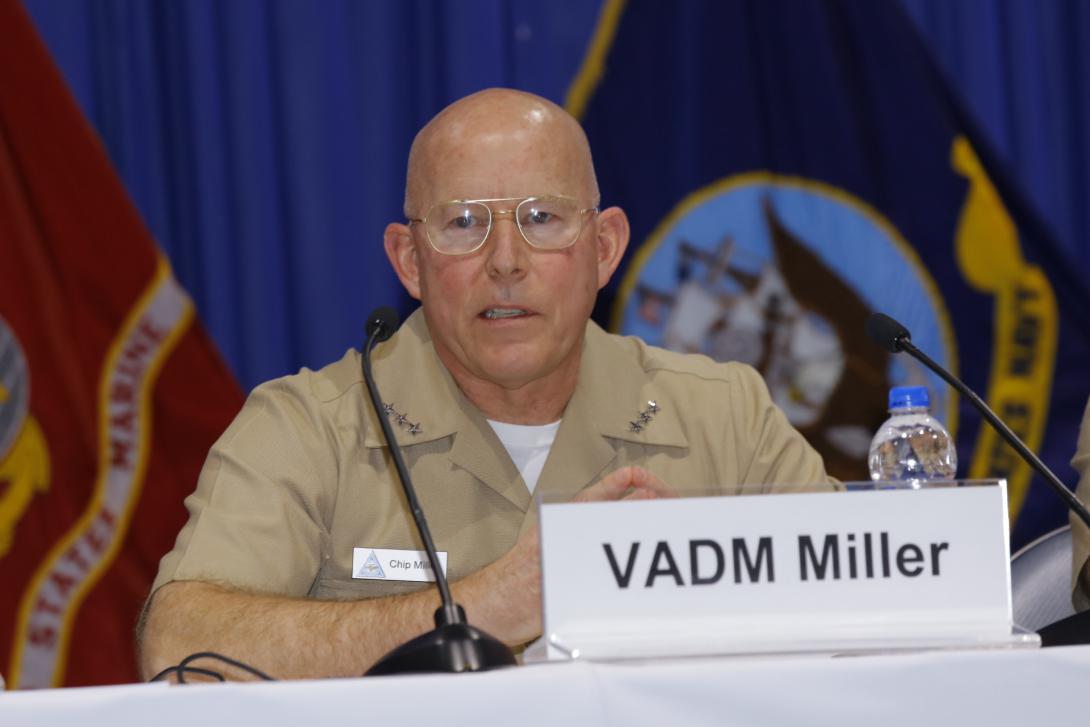Training for the Gore of War
The U.S. Navy is searching for ways to better prepare its forces for combat conditions, according to officials serving on a panel at the West 2019 Conference in San Diego.
During a question and answer session, the panelists were asked how they can prepare Navy personnel for physically and mentally challenging moments, such as when a hole is blown into the side of a ship.
Rear Adm. Daryl Caudle, USN, commander, Submarine Forces, Pacific Fleet, said submarine and others forces are attempting to do that but it is a challenge. “That is one of the toughest things to do, to create a tough and resilient sailor who knows how to handle the eventuality of taking a round, the eventuality of having a fire or flooding in one of our ships or aircraft, how not to be in a fetal position when that event occurs, to man your paddle and work through that,” he said.
Adm. Caudle said that the submarine fleet wants to train sailors and officers “though the lens of warfighting and combat in every single thing we do.”
“That’s the lens by which we want to do all of our missions. Hopefully, by doing that, you’ll approach this toughness that’s needed in combat,” Adm. Caudle added. “You can’t guarantee it but I think it’s the only way to go about it.”
Rear Adm. Ronald Boxall, USN, director, Surface Warfare, said that some of his reading has challenged him to think about what it takes to prepare soldiers for the “gore of war.” While the service cannot practice “how bloody and gory it’s going to be,” it can attempt to train crews “for that very real eventuality that happens whether you’re at war or at peacetime in an accident.”
Adm. Boxall added that the service needs to discuss the issue and understand the impact that sailors’ very real reactions to combat situations will have on fleet readiness.
He reported that training at the Surface Warfare Officer School and at boot camp is once again becoming tougher than it has been in recent years. “We’re teaching our commanding officers how to get through training in conditions I didn’t have to go through. They’re going to be in sleep-deprived conditions. They’re going to through stressful conditions,” Adm. Boxall said. While the training may not mimic what they will see in real-world operations, it can certainly improve performance during horrific events. “As we go down this path, I think we’ll get better. We’ll get better through the ability to simulate some things, but you can’t simulate death and destruction.”
Vice Adm. DeWolfe Miller III, USN, commander, Naval Air Forces/commander, Naval Air Force, Pacific Fleet, concluded the discussion by citing an anonymous quote: “'Your performance in combat never rises to the level of your expectations. It always falls to the level of your training.’ We’ve seen that play out over and over and over again.”








Comments